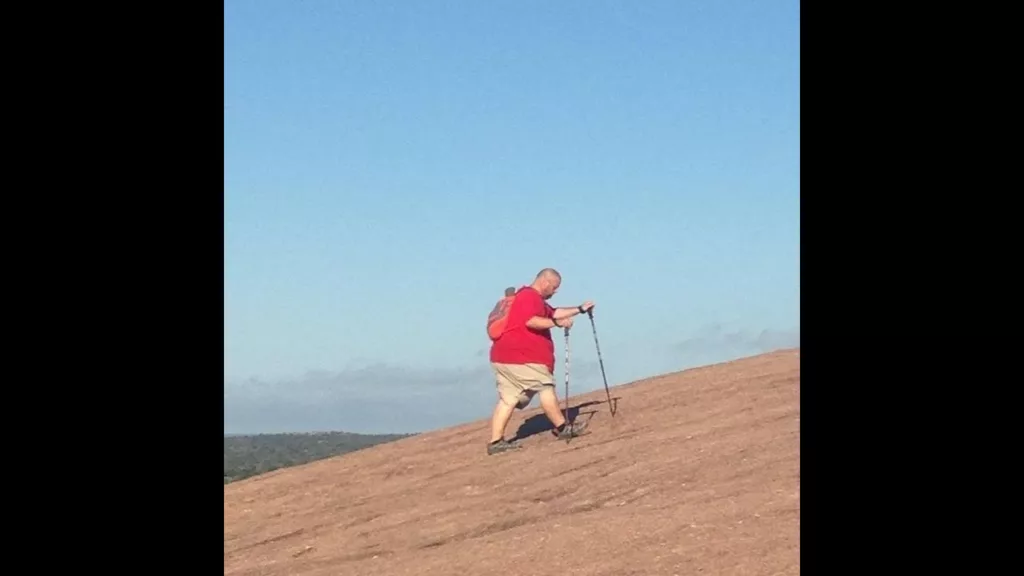Embracing Nature for Fitness and Wellness

Have you ever gone on a nature walk or a short hike and came back a bit tired and thirsty? Well, I sure have, and it honestly feels great. Well, after I am breathing normal, and my thirst has been quenched. Just this little bit of exercise can make you feel good. It works your cardiovascular system and helps you gain strength. I think this is why always love just going out for a day and doing hikes and nature walks that can take an hour to a good part of my day to complete. So, read on and see why getting out is side is a good idea.
In the realm of fitness, the choice between hitting the gym and hitting the trail often boils down to personal preference. However, there are compelling reasons why hiking might just have the edge, offering a holistic approach to physical and mental well-being that goes beyond the confines of indoor workouts.
1. Vitamin D and Sunlight Exposure
Hiking provides ample exposure to sunlight, essential for synthesizing vitamin D in the body. This natural nutrient is crucial for bone health, immune function, and overall well-being.
2. Long Aerobic Exercise
Engaging in continuous, low-level aerobic activity during hikes boosts cardiovascular fitness and promotes fat burning. This sustained effort over varied terrain challenges the body in ways that treadmill workouts simply can’t match.
3. Fresh Air and Outdoor Environment
Breathing in fresh, outdoor air during hikes is not only invigorating but also healthier compared to the often-recycled air found in gyms. The natural environment offers a diverse sensory experience that can enhance mood and reduce stress levels.
4. Social Interaction or Solitude
Hiking caters to personal preferences, whether you seek the companionship of fellow hikers or the solitude of a solitary trail. It offers a chance to connect with nature or engage in meaningful conversations with hiking companions.
5. Mental Exercise and Stimulation
Navigating trails, planning routes, and making decisions along the way provide a mental workout that stimulates cognitive function and enhances problem-solving skills. This mental engagement is a refreshing break from the repetitive nature of gym routines.
6. Functional and Dynamic Muscle Engagement
Unlike isolated exercises in a gym setting, hiking engages multiple muscle groups dynamically as you navigate uneven terrain, climb hills, and traverse varying landscapes. This functional fitness approach builds strength, balance, and endurance in a natural, integrated way.
7. Low Impact on Joints

With proper technique and equipment like trekking poles, hiking can be gentle on joints while still providing a challenging workout. The smooth, rhythmic motion of walking or hiking reduces the impact on knees and hips compared to high-impact gym activities.
8. Circadian Rhythm Alignment and Stress Reduction
Exposure to natural light during hiking helps regulate circadian rhythms, improving sleep patterns and reducing stress levels. This natural therapy is a stark contrast to the artificial lighting and stimuli often found in indoor workout environments.
9. Mental Detox and Digital Detachment
Hiking offers a valuable escape from digital distractions, allowing hikers to unplug and recharge mentally. The serene environment promotes mindfulness and relaxation, fostering a sense of well-being that extends beyond physical fitness.
10. Enjoyment and Variety
For many outdoor enthusiasts, the enjoyment of exploring new trails and breathtaking landscapes far surpasses the monotony of gym workouts. Each hike offers a unique experience, making fitness an enjoyable adventure rather than a chore.
Fitness Preparation for Hiking
Preparing for hiking involves more than just physical fitness. It requires:
1. Aerobic Fitness
Aerobic fitness is crucial for enhancing cardiovascular health and overall endurance. Engaging in regular aerobic activities improves oxygen circulation, reduces body fat stores, and strengthens muscles. This efficiency not only enhances physical performance but also allows for a more enjoyable outdoor experience, where activities like hiking become less taxing and more enjoyable.
2. Strength Training for Hiking
Strength training is essential for hikers, especially when tackling challenging terrains. Strengthening muscles, particularly the quadriceps, helps mitigate the discomfort of uphill climbs and reduces lactic acid buildup. Exercises like front barbell squats and seated leg presses simulate hiking stresses, improving muscle endurance and reducing fatigue during hikes.
3. Endurance Building Through Cycling
Building stamina is key for sustained performance during outdoor activities like hiking. Cycling is an effective way to enhance endurance as it trains muscles to efficiently flush out lactic acid during continuous exercise. Unlike weight training, cycling promotes steady but strenuous muscle activity, preparing hikers for long hikes without frequent breaks.
Gear and Nutrition Essentials
To optimize comfort and energy during hikes, invest in:
- Proper Gear: Including sturdy footwear, weather-appropriate clothing, and essential safety equipment.
- Nutrient-Dense Foods: Pack lightweight, calorie-dense snacks to sustain energy levels during long hikes.
By choosing hiking over the gym, you not only improve your physical fitness but also embrace a lifestyle that prioritizes outdoor exploration, mental well-being, and connection with nature. Whether you’re a seasoned hiker or new to the trails, the benefits of hiking extend far beyond the physical, enriching both body and mind in ways that indoor workouts simply cannot replicate.
Hold Up – The Gym Still Plays a Role!
“Why do I need to be fit just to go for a walk?”
“Isn’t walking itself sufficient?”
“Why should I have to focus on fitness for something that’s supposed to be enjoyable?”
“Do I really need to consider my fitness level to fully enjoy the outdoors?”
These are all valid questions. But think about this: have you ever walked with a stone in your shoe? Could you truly enjoy the company, wildlife, stunning views, and fresh air when all you could think about was removing that annoying stone? Probably not.
Everything is more enjoyable when you’re comfortable. Likewise, you’ll find more comfort in doing what you love effortlessly: walking, hiking, climbing, camping, or any outdoor activity. Being in good shape enables you to engage fully in these activities.
Wondering how to prepare for a multi-day hike? Let’s break it down:
Fueling Up
Choosing food for your hike is a balance between weight and calories. Opt for lightweight, calorie-dense options like Snickers bars, Peanut M&Ms, trail mix, wraps, Clif Bars, packet pasta, tuna sachets, beef jerky, and freeze-dried meals (if you’re cooking). Training with these foods helps you get accustomed to what will keep you going.
For more tips on hiking nutrition, check out our Go-Getter’s Guide to Adventure Fuel or Food Planning Tips for a Multi-Day Hike.
Gear Essentials
When it comes to gear, it’s not just about the lightest options. Quality matters too. A heavier jacket that keeps you warm can be worth its weight. Wear your hiking gear during training to get comfortable with it and ensure everything fits properly in your pack.
Pack Preparation
Preparing your pack involves more than just adding weight. Load it up with your intended gear and use water bottles or weights to simulate the weight you’ll carry. This helps you adjust to the feel of a fully packed pack.
Gradual Load Training
Start training with a lighter load, around 5kg, and gradually increase to simulate the weight you’ll carry on your hike (15-20kg). This gradual approach prepares your body without overwhelming it, ensuring you’re ready for the challenge without strain.
Train on Terrain
Physical readiness for a multi-day hike involves more than gym workouts. Mimic the conditions you’ll encounter on your hike by training on similar terrain. If your hike includes hills, find trails with inclines to build stamina and strength tailored to your adventure.
** Here’s a little transparency. Our website contains affiliate links. This means if you click and purchase, we may receive a small commission. Don’t worry, there’s no extra cost to you. It is a simple way you can help support our mission to bring you quality content. **
(As an Amazon Associate, I earn from qualifying purchases)